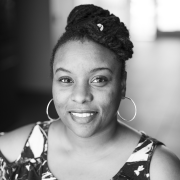Mental health should always be a priority, and it’s especially important in these challenging times filled with health concerns amidst a pandemic, economic woes and societal upheaval.
The end of an academic year can yield a roller coaster of emotions for an entire community. While it is celebratory for many, this time is also exhausting and stressful for others. Everyone needs a moment to breathe and to pause.
Laura Ross, a middle school counselor in Gwinnett County, Georgia, shares that it’s not uncommon for some children’s stress levels or anxiety to increase at the end of the school year “because that safe, structured space is going to be gone for a few months.”
It’s critical to identify those young people who may need additional support long before the end of the academic year. Support includes tangible resources such as lists of emergency numbers and helplines.
“We talk about it throughout the school year,” Ross says. “Some of my students who need extra support in that area, [I] try to make sure that they leave for the summer with a reminder of coping strategies or any tools that they need to help them through feeling anxious or feeling isolated from others.”
After returning to in-person learning, Ross says children continue to reel from the effects of the COVID-19 pandemic.
She explains that students’ concerns aren’t usually related to the virus. Apprehensions are often connected to socialization issues after being isolated for so long. She also notes that young people have become more reactive and are more likely to assume there is a conflict.
“I don’t know what it is exactly, but I have seen since the pandemic started and even now, more students talking about school not really being important, knowing when they can drop out in high school … and really not having those future aspirations,” Ross says.
Leading Into Flourishing
Byron McClure, Ed.D., a Washington, D.C.-area school psychologist, created Lessons for SEL—an organization that administers support for youth, particularly Black boys and other historically marginalized students—to ensure they see themselves in literature and social-emotional learning curricula.
As mental health awareness peaks in May, he emphasizes that mental wellness is always the goal.
“When we’re discussing mental wellness, now we’re discussing being in a place to where you are well mentally, socially, emotionally,” McClure says, “where you can tap into positive relationships and getting along with others … you are presenting the best version of yourself, which now, we’re leading into flourishing, which we don’t talk about enough in education at all.”
Community members and educators must learn the signs of mental illness—a specific diagnosable condition such as depression or anxiety disorders that affect mood, thinking and behavior. They can learn through mental health first-aid training, which is necessary to help school personnel identify resources so that young people can access proper care.
“Everyone ... [including] students … can receive mental health first-aid training,” McClure notes.
He says as a psychologist, it’s not enough to just help people not feel unwell. He promotes thriving rather than just surviving.
“If you look at the work coming out of positive psychology, [by] Martin Seligman and Chris Peterson, there’s an emerging body of literature that puts forth this idea of how to flourish, how to thrive, even in the space of education,” McClure says. “That’s looking at positive emotions, that’s looking at engagement, relationships, meaning and even achievement.”
Reflect—But Do it Year-round
Reflecting helps improve mental health in a supportive culture. Ross says it’s just as important to reflect on moments of goodness and success as it is to reflect on things that went wrong.
“Acknowledge they happen, feel what we feel about them and know that feeling is absolutely okay,” she says. “I don’t think it’s about what we have to fix. ... I think right now, it really is about the pause and just feeling all that we felt this year. That’s it. Take that moment.”
McClure says that school communities, especially, must reflect throughout the year to avoid falling into a “fix it” mode at the end of the year. He recommends “step backs.” Step backs are intentional touch points built in at least once each quarter to allow educators to reflect on their practices to see what is beneficial and what needs to be modified.
“If you’re only reflecting at the end of the year, you could be engaging in practices that have been harming students, that have been harming staff,” McClure says. “If you get to the end of the year, it is too late. … Having those touch points built in throughout the course of the year will give you a higher likelihood of being successful.”
Transitions and Expectations
Young people are often burdened with another layer of stress when they don’t meet their academic expectations at the end of the school year. Their struggles could potentially get lost in a time when many others are celebrating.
Both Ross and McClure note that schools should avoid grade retention, if possible. But when it happens, there must be a community care plan in place that utilizes strength-based approaches.
“Ideally, they will be moving through a multi-tier system of support that involves the school psychologists, the social workers [and] their parents,” McClure says.
Furthermore, issues such as grade retention are system-level harms that should be discussed long before the end of the year.
“Until you do a deep analysis of that, then that child is always going to be on a trajectory where they might be in these situations at the end of the year,” McClure says. “I think it’s ideal for schools to have systems in place to where those students aren’t falling through the cracks.”
Wading Through the Noise
Young people and adults are experiencing intense emotions in this contentious social and political moment. With new policies and laws targeting Black, Indigenous and LGBTQ communities, McClure contends that there has to be a concerted effort to support those communities and share accurate information to reduce confusion.
“We also have to make sure that we are prioritizing creating the space where young people can process and make sense of what’s happening, because our young people are under attack,” he says. “Make no mistake about it.”
Ross is an advisor for her school’s Gay-Straight Alliance and says issues like Florida’s “Don’t Say Gay” law have made these young people feel devalued.
“That’s the message that they get, that they’re less than, that there’s something wrong with them, their stories aren’t important,” Ross explains.
Schools and communities must embrace diverse and inclusive environments to support youth who absorb the chaos created by discriminatory policies and laws.
“Are we making sure that all of our students see that there’s opportunity for them?” Ross asks. “They’re important and significant in our community. … I think it takes listening to what our students say they are experiencing and what they want and need that will better this community for them.”
Rebuilding After a Pandemic
Educators are struggling to rebuild the cultures in their schools and connect with students following two turbulent years. Counselors and psychologists are integral to that rebuilding, but many schools do not have enough on staff. According to the American School Counselor Association, the recommended ratio of school counselor to students is 1-to-250. The National Association of School Psychologists recommends a school psychologist to student ratio of 1-to-500.
However, current data estimates a ratio of 1-to-415 for counselors and 1-to-1211 for psychologists. And that’s why it’s essential to leverage social networks and advocate for more funding for mental health professionals.
McClure said parents and caregivers are a vital piece of the school community who often aren’t invited to help make decisions and alleviate problems. Essentially, to best benefit young people, school leaders must check their power.
“You can cede power by inviting people, such as parents, community partners, students themselves, and giving them a seat at the table, inviting them into the decision-making process,” he says.
Ross focuses primarily on cultural responsiveness and sustaining connections with her students. She says since the pandemic, young people have been leaning on each other, which is a good sign. But educators must be intentional about making connections with children as they continue to struggle. And to do that, they have to explore their own identities and interrupt their biases.
At Ross’ school, staff engages in community circles with each other and with students. They also host events and activities that welcome people who support the school.
“It’s a reminder that we have folks all around, whether they are parents, the guardians, community members, or business owners,” she says. “They want to contribute to our school.”
What Can We Do to Help?
• Obtain mental health first-aid training to spot signs of mental health disorders.
• Byron McClure, Ed.D., recommends the Three Good Things exercise, a concept developed by psychologist Martin Seligman and his colleagues at the University of Pennsylvania. “They have found a way to scientifically increase levels of happiness while decreasing rates of depression through this “three good things” activity,” McClure says. “All it requires a person to do is to reflect on three things that went well or three good things that happened throughout the course of a person’s day.”
• Celebrate all accomplishments, not solely grades.
• Make space for young people to join community circles and other spaces at school or in the broader community to express their thoughts, feelings and concerns.
• Use this toolkit to build resilience and reduce mental health stigma in your community.

